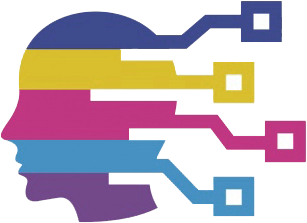In a significant move to ensure a responsible environment for artificial intelligence usage, OpenAI has announced the implementation of a new ID verification process known as Verified Organization. This strategic shift, aimed primarily at developers, aims to restrict access to the company’s most advanced AI models unless users can substantiate their identity and intent. While this reflects a commitment to accountability, it also raises crucial questions about the implications for access and innovation in the rapidly evolving AI landscape.
The Rationale Behind Verification
OpenAI’s assertion that it “takes its responsibility seriously” in ensuring that AI is both accessible and secure is a worthy principle. The company acknowledges that a minority of developers misuse its APIs, aligning with growing concerns over AI capabilities being exploited for harmful purposes. By introducing a layer of verification, OpenAI aims to fortify its safeguards against intentional infractions of usage policies. As AI becomes increasingly sophisticated, such measures could protect not only the integrity of the technology but also the public at large from potentially dangerous applications.
However, my analysis leads me to ponder whether the verification process will indeed capture all potential misuse or simply serve as a facade of security. Verification based on government-issued IDs may be effective against malicious actors operating in transparent jurisdictions, but what of those who work from regions with less robust regulatory frameworks? The challenge of enforcing compliance on a global scale is both intricate and daunting.
The Practicalities of Implementation
The operational specifics of the Verified Organization process reveal both strengths and weaknesses. Requiring an ID to register for access is a straightforward approach, yet it prompts concerns about inclusion. The notion that not all organizations will be eligible for verification implies a segregation that could stifle innovation, particularly among smaller developers and startups who may not have the resources or established credentials that larger companies possess.
Indeed, those unable to navigate the labyrinth of bureaucratic procedures may find themselves at a disadvantage, potentially impeding the very creators who could drive meaningful advancements in AI applications. A tighter grip on access may inadvertently lead to a homogeneous ecosystem where similar ideas float around, rather than the diverse and disruptive innovation needed for this technology to flourish.
A Call for More Inclusive Innovation
The duality of OpenAI’s mission—to democratize access to AI technology while simultaneously safeguarding against misuse—reveals the inherent tension in this sector. To genuinely foster innovation, especially among underrepresented creators and smaller ventures, it is imperative for organizations like OpenAI to re-evaluate their verification processes. Perhaps an alternative assessment model that utilizes more than just government IDs could provide a more inclusive platform, allowing varied entities to contribute without sacrificing security.
The company has already restricted access to its services in certain regions, emphasizing the importance of security against threats like IP theft and misuse by malicious actors. However, a better approach may be one that engages a broader audience while still adhering to responsible guidelines—bridging the gap between innovation and security seamlessly.
As the landscape of AI evolves, it is crucial for OpenAI to ensure that measures intended to protect the public interest do not inadvertently stifle potential breakthroughs. The world of AI is burgeoning with promise; a wise approach would balance expansion with responsibility, ultimately empowering creators to explore the vast horizons of artificial intelligence without undue hindrance.

